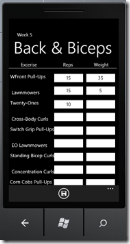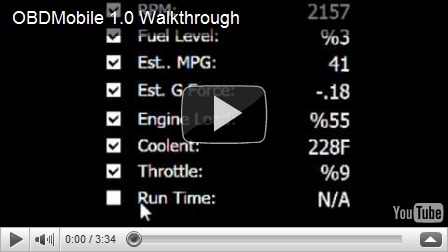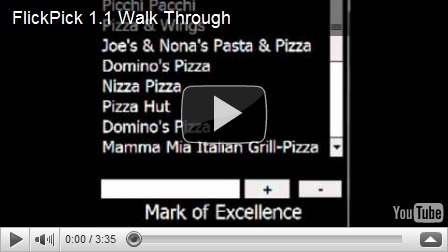February Microsoft Tech Student of the Month - Robert Klenka
 It’s time to profile our third Tech Student of the Month, featuring a student whom we feel is using the Microsoft platform and development toolset to do something exceptional. For the month of February we have chosen Robert Klenka, a junior at the University of Texas – Arlington who is studying Computer Science and Engineering. Robert is already selling his apps in the Windows Phone Marketplace and has written code that is being used on fighter jets!
It’s time to profile our third Tech Student of the Month, featuring a student whom we feel is using the Microsoft platform and development toolset to do something exceptional. For the month of February we have chosen Robert Klenka, a junior at the University of Texas – Arlington who is studying Computer Science and Engineering. Robert is already selling his apps in the Windows Phone Marketplace and has written code that is being used on fighter jets!
Robert’s interest for computers started at an early age when he was inspired by his father’s work as an engineer at General Electric. Robert became fascinated by computer programming because it allowed him the freedom to create anything he desired. His interest in Web Design lead him to create his first website by the time he was in Middle School. He taught himself how to create websites from scratch by searching for articles and tutorials online as well as toying with the NetScape Composer. Robert continued to develop his web designing skills and was later given an opportunity to create a website for a local gun club. His experiences here allowed him to improve upon his skill set and learn how to work with a real client for the first time. Consequently, he has been managing the same site for 10 years now.
Robert was unable to take programming classes until his Junior Year in high school, so he decided to work and study on his own. Once Robert became a junior, he was excelling in his programming classes having already studied for the CompTIA A+ and Cisco Certifications outside of school. It was then that he realized he wanted to pursue a degree in Computer Science after graduating. Klenka enrolled in a local community college to build up his knowledge base about programming and then went to the University of Texas – Arlington. Here, he began to learn new languages like C# and ASP.NET using Microsoft tools like Visual Studio provided by his school’s MSDNAA license and the DreamSpark program.
In the summer of his freshman year at UTA, Robert got the opportunity to combine his passions for programming and aeronautics as an intern at Lockheed Martin. During this first internship at Lockheed Martin, Robert was involved in an independent research and development group where he was able to assist with the design of an airplane chip benchmarking process. He worked on the creation of a mining program that combined three different types of airplane chip data into one using C++. In addition, Robert was given a unique opportunity to put together a first generation Microsoft Surface and write some apps for it.
Robert spent another two summers interning for Lockheed Martin. In his second term, he worked with a fellow intern on updating an application suite, that is used for electrical harnesses and diagrams, from Java version 1.3 to 1.5. This code enabled Lockheed Martin to compare different airplaine electrical layouts and is now being used on the aircraft-manufacturing floor. By his third summer at Lockheed, Robert was given the opportunity to work on the embedded software of the F-35 Lighting Joint Strike Fighter Jet using C++. Unfortunately, Robert could not expand more, deeming it ‘classified.’ Nonetheless, his code is being used on real fighter jets. Cool!
 Now that he has finished his internship at Lockheed Martin, Robert is planning to take more advanced CS classes in his senior year. He is taking advantage of this free time to work on several personal projects such as a Windows Mobile application called OBDMobile. The idea for the app started when Robert asked himself, “How can I talk to my car?” He explored how to answer this question by experimenting with his beloved Dodge truck to create an on board diagnostics kit that could check information from his car. Robert sought advice from local shops but nobody wanted to help him because it would compete with expensive products that the shops were already selling. This gave him even more motivation to build the solution himself. He used his laptop to read the data from his car and built a user interface using Windows Presentation Foundation (WPF) and Microsoft Expression Studio 3 (both of which are available to students for free on the DreamSpark website). Now Robert was truly “talking to his car” by getting all sorts of information such as RPM, MPH, cooling temperatures, lights, etc. Robert took his achievement further when he ported the app to run on his phone using Windows Mobile 6.5. OBDmobile is being sold on the Windows Phone Marketplace today for $9.99. Thanks to DreamSpark Robert was able to register his application to the App Hub for free and has had over 100 downloads from people using his app all over the world. Not a bad way to pay for books!
Now that he has finished his internship at Lockheed Martin, Robert is planning to take more advanced CS classes in his senior year. He is taking advantage of this free time to work on several personal projects such as a Windows Mobile application called OBDMobile. The idea for the app started when Robert asked himself, “How can I talk to my car?” He explored how to answer this question by experimenting with his beloved Dodge truck to create an on board diagnostics kit that could check information from his car. Robert sought advice from local shops but nobody wanted to help him because it would compete with expensive products that the shops were already selling. This gave him even more motivation to build the solution himself. He used his laptop to read the data from his car and built a user interface using Windows Presentation Foundation (WPF) and Microsoft Expression Studio 3 (both of which are available to students for free on the DreamSpark website). Now Robert was truly “talking to his car” by getting all sorts of information such as RPM, MPH, cooling temperatures, lights, etc. Robert took his achievement further when he ported the app to run on his phone using Windows Mobile 6.5. OBDmobile is being sold on the Windows Phone Marketplace today for $9.99. Thanks to DreamSpark Robert was able to register his application to the App Hub for free and has had over 100 downloads from people using his app all over the world. Not a bad way to pay for books!
Since the release in November, Robert has gone on to create a few apps for Windows Phone 7. He finds the new operating system so easy to develop for that he can create a new app in almost no time. Robert has made a lite version of OBDmobile to run on Windows Phone 7 along with new apps called FlickPick and P90X Manager. FlickPick allows you to make quick decisions by loading in a list of options and then shaking the device to pick one of them. P90X Manager helps you track your workouts and nutrition to stay in shape on the go!
We wish Robert the best of luck and hope that he enjoys learning advanced programming skills in his senior year!
Join our Microsoft Tech Student community on Facebook and tell us your story!
Read last month’s Tech Student Profile on Den Delimarsky

